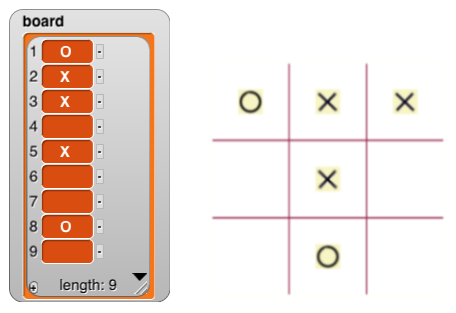
Now we'd like the computer to be a player in the game, and to do that, it has to be able to detect patterns in the board position that mean, for example, "I can win on the next move."
In earlier labs, you worked out how to display moves on a tic-tac-toe board and keep track of them in a variable board whose value is a list of nine values, one per square of the board, each of which can be X or O or empty if that square is unoccupied:

Now we'd like the computer to be a player in the game, and to do that, it has to be able to detect patterns in the board position that mean, for example, "I can win on the next move."
wins block that reports a list of all the winning triples:






{4,5,6} and board is as shown above, what will the value of occupied be after the set block is run?report block says to report
somethings: two of what, and zero of what, are required for a winning triple?keep block does. Here's a simpler example to consider:
 that reports a list of all winning triples for that player, using the list reported by
that reports a list of all winning triples for that player, using the list reported by wins.{4,5,6} for X on this board. Write 